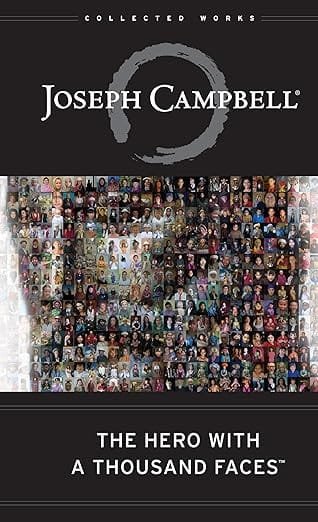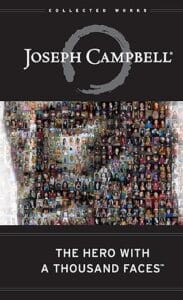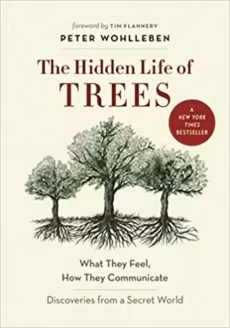Description
Introduction to Joseph Campbell and His Work
Joseph Campbell, an influential American mythologist, writer, and lecturer, is renowned for exploring the universal motifs and themes in myths across cultures. Born on March 26, 1904, Campbell’s intellectual pursuits primarily centered around mythology, literature, and psychology. His work has significantly shaped the understanding of mythological narratives and their impact on personal and collective human experience. Drawing inspiration from diverse cultural systems, Campbell sought to illustrate the patterns inherent in storytelling, ultimately contributing to the field of comparative mythology. Joseph Campbell’s masterpiece: “The Hero with a Thousand Faces”
The publication of The Hero with a Thousand Faces in 1949 marked a pivotal moment in Campbell’s career. The book presents a comprehensive overview of the archetypal hero’s journey, a narrative framework that resonates in various myths, legends, and contemporary storytelling. Carl Jung’s psychological theories profoundly influenced Campbell, particularly his ideas about the collective unconscious and archetypes. These elements are crucial in understanding how myths function in individual psyches and cultures as a whole.
Throughout The Hero with a Thousand Faces, Campbell delineates the stages of the hero’s journey, which serves as a blueprint for countless narratives. He investigates how heroes embark on transformative quests, face various trials, confront adversaries, and ultimately return home with newfound wisdom. By illuminating these themes, Campbell not only provides insights into the structure of storytelling but also raises essential questions about identity, personal growth, and the nature of existence.
In the context of post-war America, Campbell’s work arose during a time of significant cultural shifts. The growing interest in Eastern philosophy, psychology, and the universal search for meaning aligned with Campbell’s aim to unveil the connections between mythological stories worldwide. Thus, his exploration of mythology continues to provide valuable perspectives on the human experience, making it a significant contribution to both literature and psychology.
The Monomyth: Understanding the Hero’s Journey
The concept of the monomyth, often referred to as the Hero’s Journey, is a foundational narrative structure popularized by Joseph Campbell in his influential work, The Hero with a Thousand Faces. This structure outlines the universal stages that a hero typically traverses in myths, stories, and legends across diverse cultures. The Hero’s Journey serves as a lens through which we can examine various storytelling traditions, revealing the common themes and character arcs that resonate with audiences worldwide.
The journey is typically divided into several stages, starting with the call to adventure. This initial phase presents the hero with a challenge or quest that disrupts their ordinary world. It is crucial, as it sets the events of the narrative in motion. Following this call, the hero encounters a mentor or guide who provides the support and advice necessary for embarking on the journey.
As the hero proceeds, they eventually encounter the crossing of the threshold, marking the transition from the familiar to the unknown. This moment is often filled with tension and uncertainty, as the hero must confront fears and challenges inherent in their new environment. The journey continues with various trials and tribulations, ultimately leading to a climax where the hero faces their greatest adversary or challenge.
After overcoming this pivotal obstacle, the hero experiences a transformative realization that leads to their ultimate triumph. The final stages involve the return home, where the hero brings back the lessons learned and shares their newfound wisdom with their community. This cyclical structure of adventure, transformation, and return illustrates not only personal growth but also the universal themes of human experience that transcend individual cultures.
Through examples from literature, film, and mythology, the Hero’s Journey framework remains pertinent, highlighting how its stages manifest differently while retaining underlying similarities. Notable examples include works like The Odyssey, Star Wars, and The Lion King, each reflecting the timeless narrative arc that the monomyth encapsulates.
Cultural Significance of the Hero’s Journey
Joseph Campbell’s concept of the Hero’s Journey has transcended cultural boundaries, demonstrating remarkable significance across various societies. This universal narrative structure reveals intrinsic patterns that resonate with the human experience, reflecting shared values, struggles, and triumphs. The arcs of transformation depicted in The Hero’s Journey echo countless legends, myths, and stories, underscoring their relevance throughout history.
For instance, in ancient Greek mythology, the saga of Odysseus in “The Odyssey” embodies the Hero’s Journey, showcasing themes of adventure, struggle, and self-discovery. Similarly, the journey of Siddhartha in Buddhist tradition illustrates a quest for enlightenment, highlighting the transformative aspects of the hero archetype as it relates to personal growth. In these traditions, the journey serves not only as a narrative device but also as a tool for conveying cultural values and moral lessons.
Furthermore, contemporary media has skillfully integrated these archetypal patterns into various formats such as films, literature, and video games. In movies like “Star Wars,” Luke Skywalker’s evolution from an inexperienced youth to a powerful Jedi exemplifies Campbell’s stages. The applause that such stories garner indicates the enduring appeal of these archetypes, revealing how they resonate with a modern audience navigating their quests for identity and purpose.
Moreover, the adaptability of the Hero’s Journey allows it to traverse generational gaps. Works such as “Harry Potter” and “The Lord of the Rings” employ components of Campbell’s narrative framework to engage young and old alike, facilitating a connection that persists despite changing cultural landscapes. This phenomenon underscores the Hero’s Journey’s dynamic nature, affirming its status as a cornerstone of storytelling across epochs.
Psychological Aspects of the Hero’s Journey
Joseph Campbell’s exploration of the Hero’s Journey provides significant insights into the psychological transformations experienced by individuals. At its core, the Hero’s Journey represents a universal blueprint for personal growth and transformation, closely aligning with psychological theories such as Carl Jung’s concepts of archetypes and individuation. The narrative structure offers a metaphorical map, illustrating the evolution that an individual undergoes as they navigate through life’s challenges, akin to the protagonist’s quest in myths and stories.
Central to Campbell’s framework are the archetypal figures that populate the Hero’s Journey, embodying various aspects of the human psyche. The Hero, the Mentor, and the Shadow are some of the archetypes that illustrate the internal struggles individuals face, signifying the conflict between conscious desires and unconscious fears. As the hero confronts these archetypes, they engage in a process of individuation, a journey towards integration of the self. This psychological transformation reflects a profound alignment with Jungian theories, demonstrating how mythic narratives can parallel personal identity exploration.
The stages of the Hero’s Journey, such as the Call to Adventure, the Abyss, and the Return, encapsulate essential phases of psychological growth. These stages allow individuals to confront their fears, adapt to new challenges, and ultimately experience a rebirth of self. Through this lens, the Hero’s Journey becomes more than mere storytelling; it catalyzes self-discovery, resonating with the collective unconscious and societal values. In narrating these archetypal stories, cultures provide frameworks within which individuals can relate their own experiences, facilitating understanding and reflection on personal identity formation.
As such, the Hero’s Journey can be viewed as a powerful narrative tool that mirrors the human experience, prompting ongoing exploration into the depths of one’s psyche. In summary, Campbell’s interpretation of myth serves not only as a narrative structure but also as a potent psychological model for personal transformation.
Conclusion: The Legacy of ‘The Hero with a Thousand Faces’
Joseph Campbell’s ‘The Hero with a Thousand Faces‘ has established itself as a seminal work that transcends the boundaries of literature and psychology. Through its exploration of the Hero’s Journey, this book reveals the universal patterns found in stories across cultures and eras. This intricate narrative structure serves not only as a framework for storytellers but also as a mirror reflecting our own life experiences. The resonance of Campbell’s ideas can be seen in numerous modern works of literature, film, and various forms of media, showcasing their relevance in contemporary storytelling.
Campbell’s analysis has inspired countless writers and filmmakers, allowing them to draw from a rich tapestry of archetypes and themes that echo throughout history. By understanding the stages of the Hero’s Journey, such as the call to adventure, the trials faced, and the eventual return with newfound wisdom, creators are empowered to craft narratives that resonate deeply with audiences. This structure prompts viewers and readers to engage actively with the material, recognizing the parallel between fictional journeys and their life paths.
Moreover, the implications of Campbell’s work extend beyond mere storytelling; it offers valuable insights into personal growth and transformation. As individuals navigate their challenges and experiences, viewing their lives through the lens of the Hero’s Journey may lead to a more profound understanding of their struggles and triumphs. In doing so, one can embrace the notion that life itself is a quest, filled with opportunities for growth, self-discovery, and ultimately, enlightenment.
In conclusion, ‘The Hero with a Thousand Faces’ remains a vital text that continues to inspire and shape our understanding of narratives and the human experience. Its legacy endures, encouraging each of us to embark on our journeys and enriching both our lives and the stories we share.
Frequently Asked Questions:
Who was Joseph Campbell and what is his significance?
Joseph Campbell was an influential American mythologist, writer, and lecturer renowned for exploring universal motifs and themes in myths across cultures, significantly shaping the understanding of mythological narratives and their impact on human experience.
What is ‘The Hero with a Thousand Faces’ about?
‘The Hero with a Thousand Faces,’ published in 1949, presents a comprehensive overview of the archetypal hero’s journey, illustrating the stages of transformation, trials, and growth common in myths, legends, and stories worldwide.
What is the concept of the monomyth or the Hero’s Journey?
The monomyth, or the Hero’s Journey, is a universal narrative structure outlined by Campbell, detailing stages like the call to adventure, crossing of the threshold, trials, confrontation, and return, which appear in myths, stories, and legends across cultures.
Why is the Hero’s Journey culturally significant?
The Hero’s Journey is culturally significant because it reveals universal patterns that resonate across societies, reflecting shared values, struggles, and triumphs, thereby serving as a powerful framework for understanding human development and storytelling.
How does Campbell’s work relate to psychological growth?
Campbell’s exploration of the Hero’s Journey provides insights into psychological transformation, illustrating how confronting archetypes and challenges promotes self-discovery, personal growth, and integration of the self, aligning with Carl Jung’s theories of individuation.









